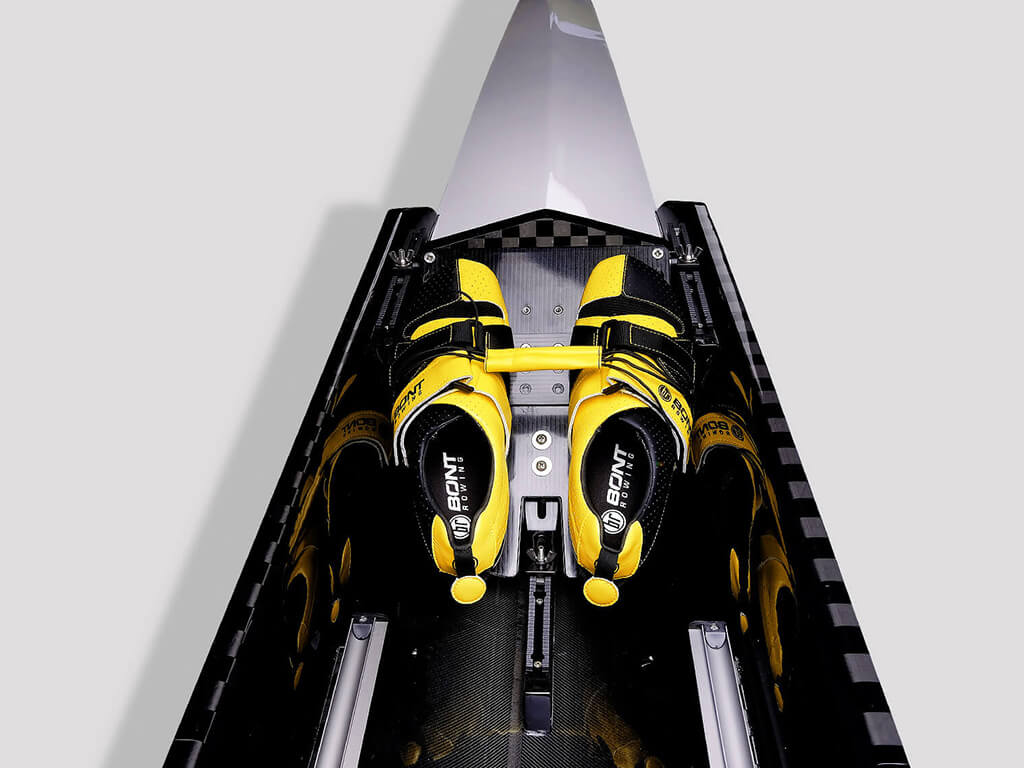The next relatively simple change that can be made is to your foot stretcher height. This has a real effect on a rower’s comfort in the boat and can be forgotten very easily. If you’ve ever suffered from cuts caused by the slide, or find your legs hitting the deck as you push down on your leg drive, there is a real possibility that your feet are too low in the boat. Equally, if your feet are too high in the boat, you are going to struggle to get all the length you are after at the catch. As a really basic rule of thumb, you’ll be able to figure out what your shoe height should be based on your shin length. The longer the shin, the lower your foot-stretcher should sit in the boat or on the rowing machine. There will be an optimal length-to-power ratio that you will find, where you can stay in a long position at the catch comfortably without jeopardising power through the stroke
The final aspect of the foot stretcher setup is the one piece of the puzzle that seems to be often overlooked or put in the too-hard basket – the stretcher angle. Every stroke a rower takes they need to be connected to the boat to generate power. They push against the foot stretcher just like you would push against a leg press or how you would perform a squat. Next time you do a squat, change the angle of your feet and you’ll get an impression of how important the stretcher angle setup is to the rowing stroke and generating power. If the angle is too sharp (close to vertical), then the rower is going to shorten up at the front stop. If it is too shallow, they’ll get plenty of length, but won’t be able to convert that length into any meaningful power. Again, there are plenty of scientific methods of checking stretcher angle, and a lot of studies that identify “optimum angles”, but the rule of thumb should be to adjust the angle to a point where the athlete can comfortably get their shins vertical, but only just. That should put the stretcher in a position that lets the athlete obtain length while still generating power.
Hopefully, those few hints will at least help you start to think about how you set your athlete’s foot stretcher up. All our SL Racing boats have adjustable stretchers, but if you need a hand, swing by our tent at a regatta sometime. Most importantly always remember that while there are tonnes of research, statistics and numbers out there that will tell you the ‘optimum’ placement and angle for a foot stretcher, what those numbers don’t take into account is the individual. Everybody is different, and a foot-stretcher setup should acknowledge that – aiming for that perfect compromise between comfort and speed.


